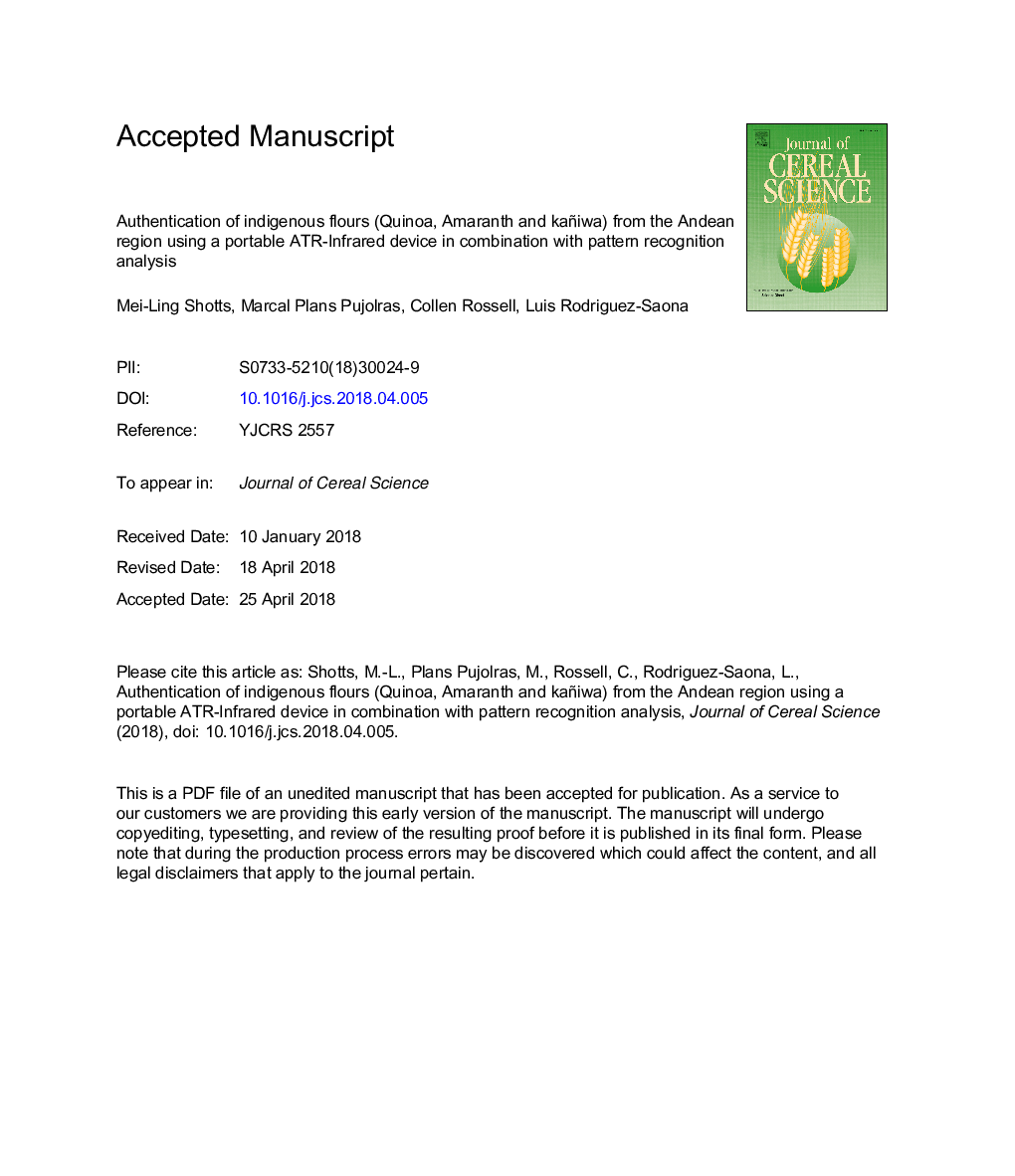| Article ID | Journal | Published Year | Pages | File Type |
|---|---|---|---|---|
| 8881267 | Journal of Cereal Science | 2018 | 26 Pages |
Abstract
Quinoa (Chenopodium quinoa Willd.), kañiwa (Chenopodium pallidicaule Aellen) and kiwicha (amaranth, Chenopodium pallidicaule) are high nutritional value grains that are at risk for adulteration with less expensive grains. Our objective was to develop a rapid untargeted approach to authenticate high-value Andean grain flours by combining infrared spectroscopy and pattern recognition analysis. Samples (nâ¯=â¯106) were collected from Peruvian (nâ¯=â¯89) and US (nâ¯=â¯17) markets that included quinoa, amaranth, kañiwa and other common flours from the Andean region. Flour composition was characterized by reference methods including fat (Soxhlet, AOAC#922.06), protein (Dumas, ICC Standard #167), and fatty acid profile (AOAC #996.0). Spectra was collected by using a portable infrared system with a single-reflection diamond ATR crystal, and analyzed by Soft Independent Model of Class Analogies and Partial Least Square Regression. Authentic grain flours formed distinct clusters and commercial samples from Peruvian markets showed a prevalence of adulteration. Spectral differences were associated with the fingerprint region (1100-900â¯cmâ1) due to differences in starch structure. Regression models were generated for rapid determination of fat (Rcvâ¯=â¯0.98, SECVâ¯=â¯0.3) and protein (Rcvâ¯=â¯0.98, SECVâ¯=â¯0.96) levels. New generation of portable infrared devices provided a viable tool for chemical profiling allowing for rapid, “in-field”, and reliable authentication of food ingredients.
Keywords
Related Topics
Life Sciences
Agricultural and Biological Sciences
Agronomy and Crop Science
Authors
Mei-Ling Shotts, Marcal Plans Pujolras, Collen Rossell, Luis Rodriguez-Saona,
